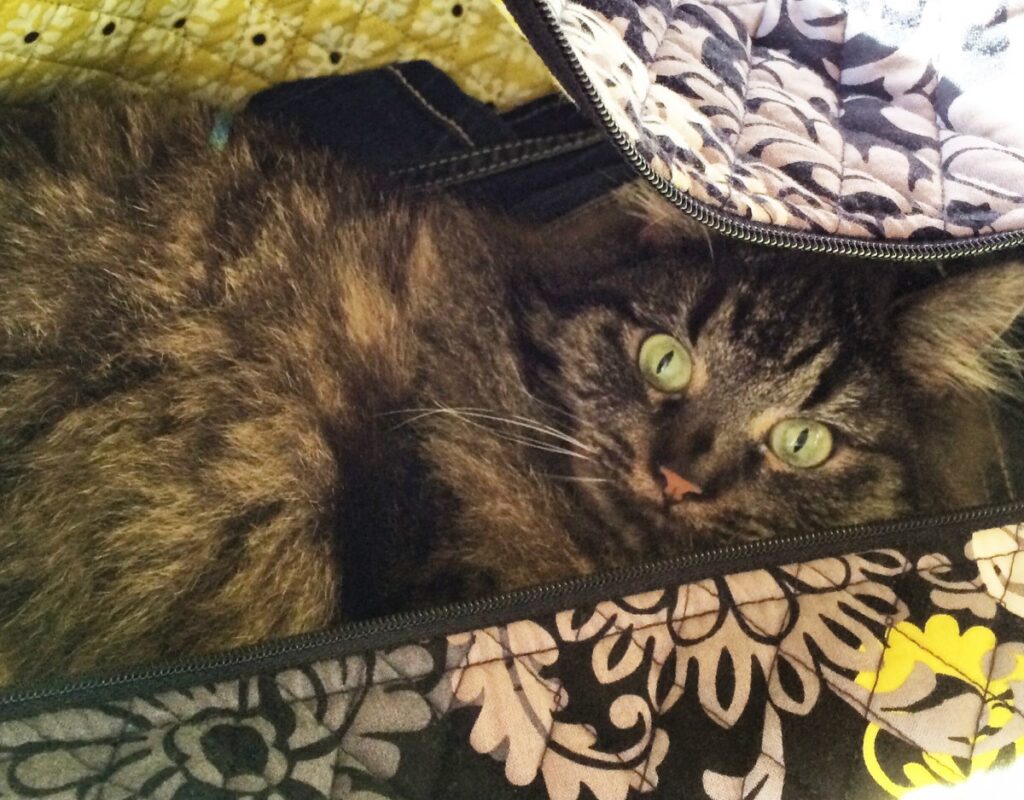Although it’s not impossible, bringing a foreign cat or dog into France is subject to strict rules. This is because of the risk of carrying serious diseases, such as rabies or avian flu. What types of animal are involved? What procedures need to be followed?
You’ve got several months ahead of you to explore Paris, Provence or the charms of Normandy, but you don’t want to entrust your favorite pet to anyone? Can’t do without your cat or puppy for the next few months of your French adventure? The law distinguishes between the travel of animals from abroad, outside the European Union, and within the European Union, to France. And the rules vary according to the type of pet involved.
What types of cat or dog can I bring in France from abroad?

All Category 3 dogs can be brought into France from abroad.
Certain 2nd category guard and defense dogs may enter France under certain conditions. These are the following breeds
- American Staffordshire terrier (pit bulls).
- Rottweiler.
- Tosa.
They are authorized, subject to compliance with specific rules governing their movement and keeping.
All breeds of cat can be brought into France from abroad.
Please note: ferrets can be brought from abroad under the same conditions as cats and dogs.
Good to know
There are specific rules for bringing other pets such as birds, ornamental aquatic animals, reptiles, rodents and rabbits into France. Find out more in advance.
What types of animals may not be imported into France?
Specific measures apply to the introduction of dangerous dogs into France.
Certain 1st category attack dogs are banned in France. They may not enter the country. These are dogs with morphological characteristics similar to the following breeds:
- American Staffordshire terrier (pit bulls).
- Mastiff (boerbulls).
- Tosa.
Bringing back a 1st category dog from abroad is a criminal offence punishable by 6 months’ imprisonment and a fine of 7,500 euros. Additional penalties include confiscation of the animal and a ban on owning a 1st or 2nd category dog for at least 5 years (article L215-1 of the French Rural and Maritime Fishing Code).
Please note: the precise list of attack, guard and defense dogs is set out in the decree of April 27, 1999.
🔗 Read Also: Understanding Visa Requirements for Traveling in France and the Schengen Area
What is the minimum age for a cat or dog brought into France?
Dogs and cats brought into France must have at least 1 adult tooth (article L236-1 of the French Rural and Maritime Fishing Code).
It must also be over 12 weeks old.
What steps must be taken before importing?

Here’s the procedure for bringing your cat or dog to France. If you’re coming from outside the European Union (EU), additional formalities are required.
– Identify your cat or dog
Identification can be made by a clearly legible chip or tattoo, if affixed before July 3, 2011.
– Have vaccinated the cat or dog against rabies
A valid rabies vaccination is compulsory.
Only cats and dogs over 12 weeks old can be vaccinated. You must wait at least 21 days after vaccination.
Here is a list of laboratories authorized in EU and non-EU countries to verify the efficacy of rabies vaccination (approved rabies serology laboratories) for dogs, cats and ferrets entering an EU country:
– For an animal coming from an EU country, have a European pet passport.
The pet’s European passport includes :
- the owner’s contact details;
- description of the cat or dog ;
- marking or identification ;
- vaccination against rabies;
- the date of validity of the passport;
- that a clinical examination of the animal has been carried out 2 days before travel.
It is issued by a veterinarian.
– For animals coming from outside the EU, an original health certificate is required.
The original health certificate must be issued by an official veterinarian of the non-EU country of origin:
- identification or marking of the animal ;
- anti-rabies vaccination or proof that the animal has been vaccinated against rabies;
- rabies antibody titration in an approved EU laboratory, at least 30 days after vaccination and 3 months before travel;
- the date of a medical examination by a veterinarian, at least 10 days before travel to France.
To find out more, contact your local embassy or veterinarian.
Who can travel with my pet?
The person named as the pet’s owner on the identification document must bring the animal back to France.
However, a person authorized in writing by the owner may travel with the pet on his or her behalf.
The maximum number of pets, specifically cats, dogs and ferrets, that can travel is 5. The flight must not be for the purpose of selling or transferring ownership of a pet. This is referred to as non-commercial fight.
Above 5, proof is required:
– That they are taking part in a competition, exhibition or sporting event.
And,
– That they are over 6 months old (Article 5 of Regulation (EU) n°576/2013 of the European Parliament and of the Council of June 12, 2013 on the non-commercial movement of pet animals ).
What steps need to be taken once the animal is on French soil?
If the animal resides in France for more than 3 months, it must be registered with the Fichier National d’Identification (FNI) of I-Cad.
Pet owners have 8 days from the date of import to complete this procedure.
In concrete terms, you need to compile a file containing the following documents:
- A provisional certificate of identification issued by a veterinarian for imports or intra-Community trade.
- A cheque for 9.23 euros made payable to I-CAD.
- The following photocopies:
- – Description of the animal.
- – Marking or identification of the animal.
- – Anti-rabies vaccination.
- – Date of issue of European passport.
- – If the animal is not from the EU, rabies antibody titration is also required.
The complete application must be sent by post to the following address: I-CAD, 112 – 114 avenue Gabriel Péri, 94246 L’Haÿ-les-Roses Cedex.
If the file is in order, the owner will receive a provisional and definitive identification certificate.
If the file is not compliant, the I-CAD veterinarian alerts the Direction Départementale de la Protection des Populations (DDPP), which will, if necessary, issue a prefectoral order placing the animal under surveillance. In this case, the final identification card will only be issued once the animal has been placed under surveillance, and proof of valid rabies vaccination has been provided.
How do I bring my pet home by plane?
Find out in advance about the conditions for transporting animals on the airline or train company you are planning to travel with.




